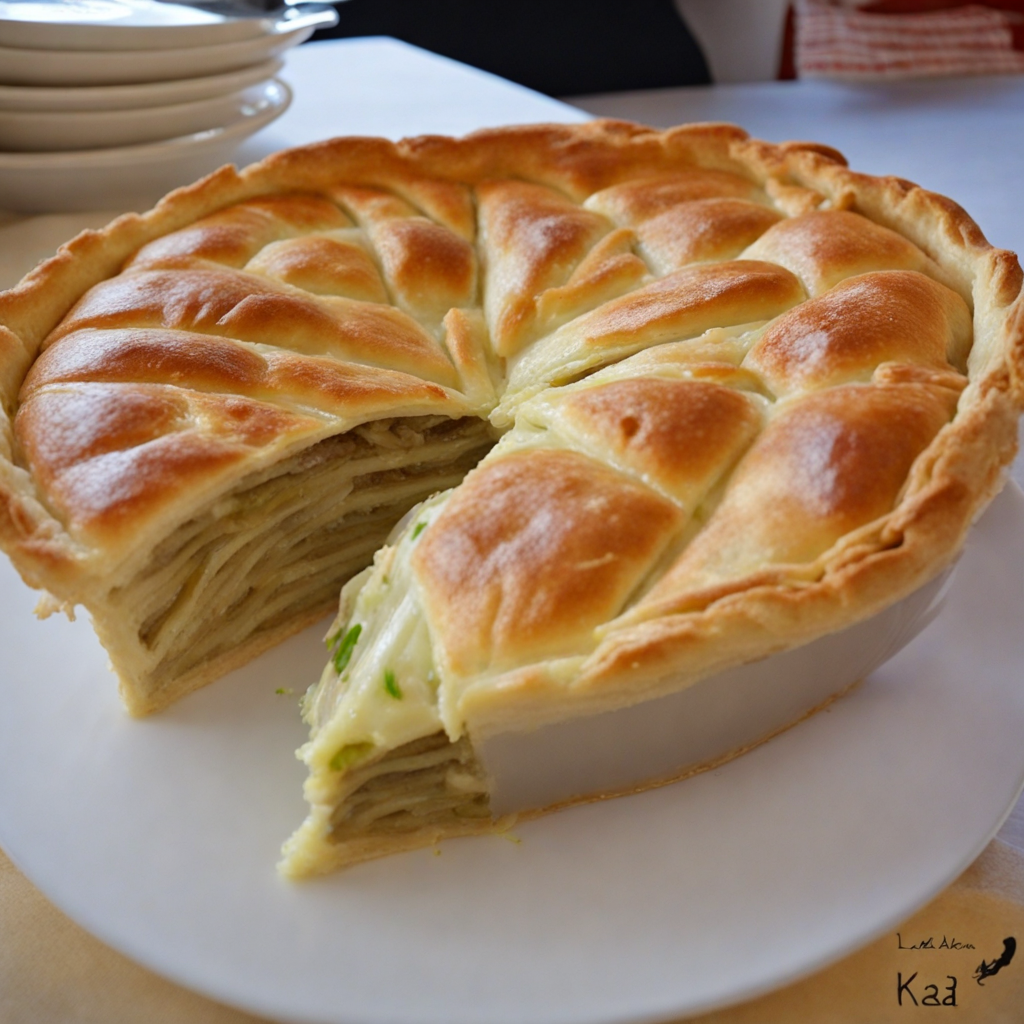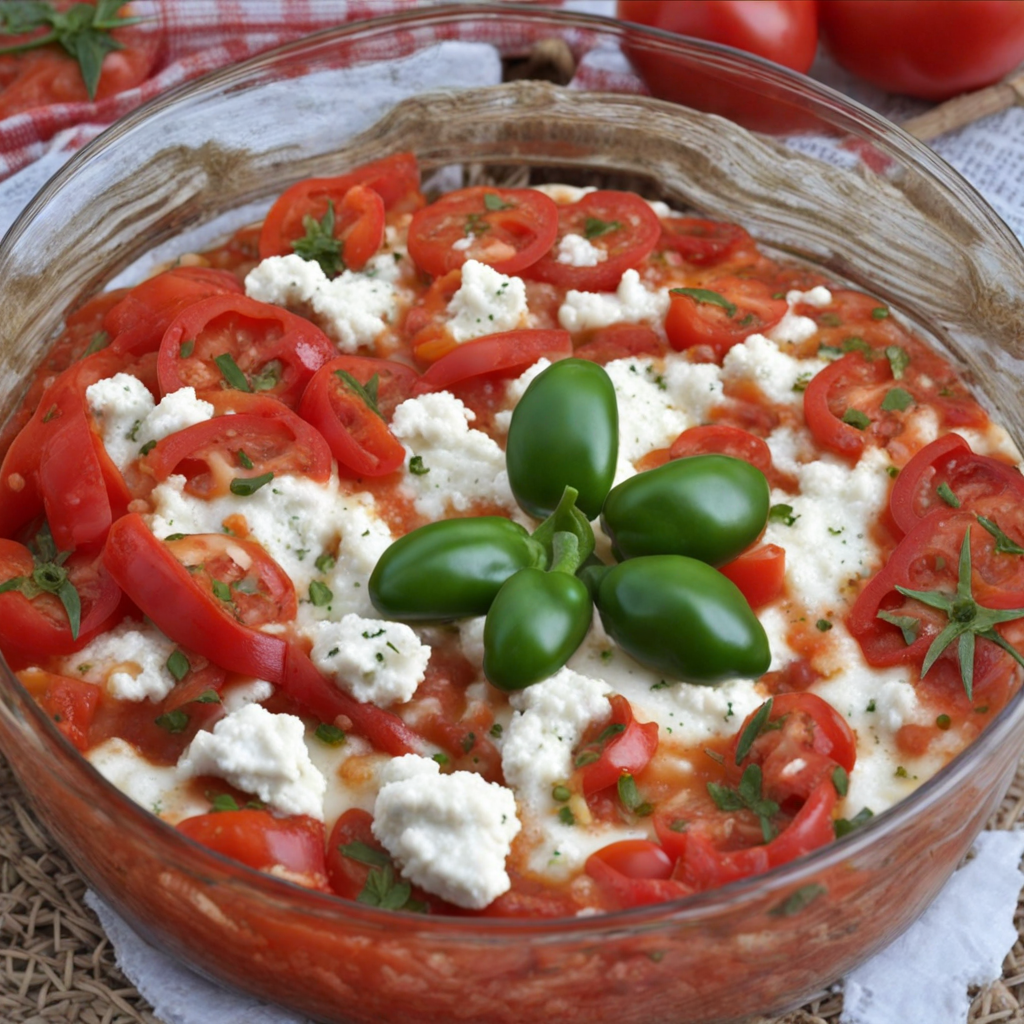Byrek
Byrek is a traditional Albanian pastry that embodies the rich culinary heritage of the region. This delightful dish consists of thin layers of dough, similar to phyllo, which are meticulously filled with a variety of ingredients. The most common fillings include a mixture of cheese, spinach, and herbs, but it can also feature minced meat, potatoes, or even pumpkin, showcasing the versatility of this dish. Each bite offers a satisfying crunch from the flaky crust, followed by a burst of flavors from the savory filling, making it an irresistible treat for anyone who loves pastries. The preparation of Byrek is an art form in itself, requiring skill and patience to achieve the perfect flaky texture. The dough is rolled out into paper-thin sheets, which are then layered and folded around the filling before being baked to golden perfection. In Albania, Byrek is often enjoyed as a snack, appetizer, or even a main course, and it can be found in homes, bakeries, and restaurants alike. Its warm, comforting qualities make it a beloved staple in daily Albanian life, often served with yogurt or a side salad for a complete meal. What sets Byrek apart is not just its taste but also the cultural significance it holds. It is often prepared during special occasions and gatherings, symbolizing hospitality and togetherness. As you take a bite of this flavorful pastry, you are not just experiencing a new taste, but also a piece of Albanian tradition. The combination of textures and flavors in Byrek invites you to explore the country's culinary landscape, making it a must-try for anyone looking to expand their palate and discover the authentic tastes of Albania.
How It Became This Dish
Byrek: A Culinary Journey Through Albania's Past and Present Byrek, a savory pastry that has become a quintessential part of Albanian cuisine, is more than just a beloved dish; it is a testament to the rich tapestry of cultural influences and historical events that have shaped Albania. With its flaky layers, savory fillings, and enticing aromas, byrek has earned its place not only on Albanian dining tables but also in the hearts of those who cherish the country's culinary heritage. Origins of Byrek The origins of byrek can be traced back to the ancient Mediterranean civilizations, where the practice of wrapping fillings in dough was commonplace. The earliest known references to a dish resembling byrek can be found in ancient Greek and Roman texts. The Greeks had a dish called "burek," which was made with layers of dough and various fillings. Similar pastries can also be found across the Middle East and the Balkans, indicating that the concept of a filled pastry transcends individual cultures. In the context of Albania, byrek likely entered the culinary lexicon during the Ottoman Empire's rule, which lasted for over four centuries (15th to 20th century). As the Ottomans expanded their empire, they brought with them their culinary traditions, including a variety of pastries. The word "burek" itself is derived from the Turkish word "börek," which refers to a range of filled pastries made with thin layers of dough. The adaptation of this dish within Albanian cuisine saw the incorporation of local ingredients and flavors, leading to the unique version known today as byrek. Cultural Significance Byrek is more than just food; it is a symbol of Albanian hospitality and community. Traditionally, it is prepared for special occasions and gatherings, such as weddings, holidays, and family celebrations. In rural areas, making byrek is often a communal activity where family members come together to roll out the dough, prepare the filling, and bake the pastries. This process fosters a sense of togetherness and strengthens familial bonds, making byrek a dish that carries emotional significance. The fillings of byrek can vary widely, reflecting regional ingredients and personal preferences. Common fillings include spinach, feta cheese, ground meat, and various vegetables, all encased in layers of thin pastry. This versatility not only showcases the abundance of Albanian agriculture but also highlights the adaptability of byrek to different tastes and dietary needs. Vegetarian versions are particularly popular and are often made with seasonal ingredients, making byrek a dish that evolves with the changing seasons. Byrek is also a street food favorite, found in bakeries and markets throughout Albania. It is often enjoyed as a quick snack or a light meal, making it accessible to people from all walks of life. The popularity of byrek extends beyond Albania's borders, as it has become a cherished dish in neighboring countries, including Kosovo, Macedonia, and Montenegro, where variations of the pastry can be found. This cross-cultural exchange further emphasizes the shared culinary heritage of the region. Development Over Time As Albania navigated the complexities of the 20th century, including periods of isolation and political turmoil, byrek remained a constant in the lives of its people. Under the communist regime, which lasted from the end of World War II until the early 1990s, the focus on self-sufficiency and local ingredients became paramount. Traditional recipes were preserved, and byrek was often made with whatever ingredients were available, reflecting the resilience and resourcefulness of the Albanian people. The fall of communism in the early 1990s brought about significant changes to Albania's culinary landscape. With the opening of borders and the influx of global influences, new ingredients and cooking techniques began to permeate Albanian kitchens. Byrek adapted once again, with chefs experimenting with fillings and flavors, incorporating international elements while still honoring traditional recipes. This fusion reflects Albania's evolving identity as a nation that respects its heritage while embracing modernity. In recent years, there has been a resurgence of interest in traditional Albanian cuisine, with byrek at the forefront of this culinary revival. Chefs and home cooks alike are rediscovering age-old recipes and techniques, often showcasing them in contemporary settings. Food festivals and culinary events have sprung up across the country, celebrating byrek and its variations, allowing local producers, artisans, and chefs to share their love for this beloved dish. The global interest in Albanian cuisine has also grown, thanks in part to the diaspora and the increasing popularity of Balkan cuisine worldwide. Albanian restaurants and food establishments are emerging in various cities across Europe and North America, introducing byrek to new audiences. This globalization of byrek not only highlights its culinary significance but also serves as a reminder of the interconnectedness of cultures through food. Conclusion Byrek is more than just a delicious pastry; it is a symbol of Albania's rich history, cultural heritage, and the resilience of its people. From its ancient origins to its modern adaptations, byrek embodies the spirit of community, hospitality, and creativity that defines Albanian cuisine. As it continues to evolve and capture the hearts of food lovers around the world, byrek stands as a testament to the enduring power of food as a means of connection, celebration, and cultural identity. Today, whether enjoyed at a family gathering, a bustling street market, or a fine dining restaurant, byrek remains a cherished dish that links Albanians to their past while paving the way for future generations to continue this delicious tradition. As its story unfolds, byrek will undoubtedly continue to be a source of pride, nostalgia, and flavor in the hearts and homes of all who partake in its rich legacy.
You may like
Discover local flavors from Albania







